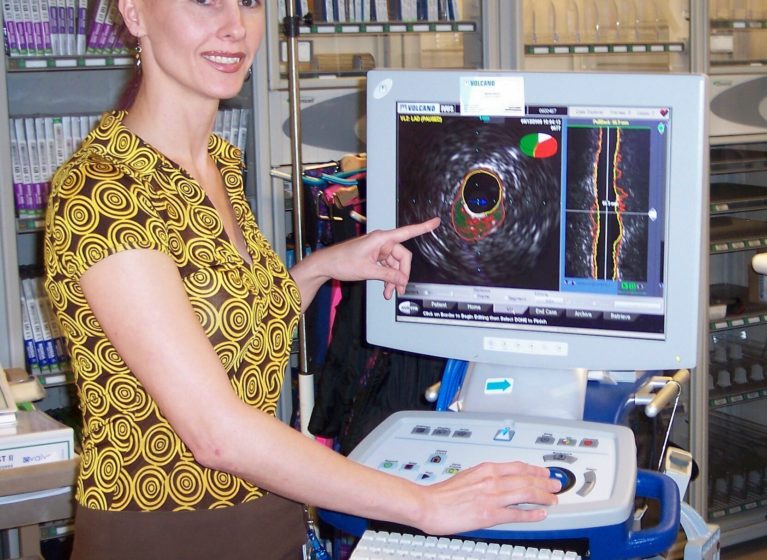
Motivated by a desire to understand why sudden cardiac death claims the lives of women under 60 at twice the rate of their male counterparts, Angela M. Taylor, M.D., an interventional cardiologist at the University of Virginia Health System, is launching a unique study that will color-code and measure plaque deposits inside the coronary arteries of male and female patients between the ages of 18 and 50.
The progressive accumulation of plaque, which is also known as atherosclerosis, causes coronary artery disease (CAD) and is the leading cause of cardiovascular disease, heart attacks and death in both sexes. While improvements in diagnosing and treating CAD have lowered men’s death rates, they have not been as successful in women.
As Taylor observes, “Most women who die suddenly from heart disease have no previously recognized symptoms. Even when they are diagnosed with CAD and given the same treatments as men, premenopausal women are twice as likely to die from heart attacks. This tells me we’ve missed something extremely important when it comes to understanding how heart disease develops in women.”
A specialist in cardiac catheterization, Taylor believes that missing information lies within the important, yet clinically unrecognized differences in how men and women accumulate plaques within their coronary arteries and what causes that plaque to be vulnerable to disruption. Her two-year study will involve male and female patients admitted to UVA with acute coronary syndrome (ACS), which includes severe heart attacks and unstable angina. Ultimately, her goal is to open doors to the development of more effective treatments for women with ACS.
Taylor’s research is the first of its kind in the United States and will use some of the most advanced imaging technology available today: virtual histology-intravascular ultrasound (VH-IVUS), optical coherence tomography (OCT) and specialized software. The ultrasound equipment will provide images showing the types of plaque (fibrous, fibro-fatty/lipid-rich, necrotic core and dense calcium) that have built up in each patient’s arteries. At the same time, the OCT system will provide views of the luminal surface (wall of the open channel within the coronary artery) and locate areas where plaque has eroded or ruptured. The software program will then assess the images, measuring and calculating percentages of each type of plaque present.
“The most unique aspect of this study is the use of OCT, which is a promising new technology being used in a select number of research applications,” Taylor explains. “When combined, the real-time visualization capabilities of OCT and VH-IVUS will help us characterize important differences in men’s and women’s plaques.”
Recent research has shown that significant differences exist in the amount of plaque that men and women accumulate in their coronary arteries. Women often build up larger amounts of plaque than men and experience symptoms and adverse cardiac events before current diagnostic methods detect problematic plaque levels.
Another recent finding is that ACS often develops in younger women when areas of fibrous plaque erode. By contrast, men tend to develop ACS due to ruptures in lipid-rich areas of plaque.
“During the past several years, the medical research community has learned a lot about how heart disease develops in women,” Taylor notes. “But, mortality rates remain higher in women, indicating we still have a lot more to learn.”
Funding for the new UVA study, named RED HOT, is being provided by Volcano Corporation. More information about the study is available from Linda Bailes at 434-982-1058 or by emailing lgs2M@virginia.edu .


